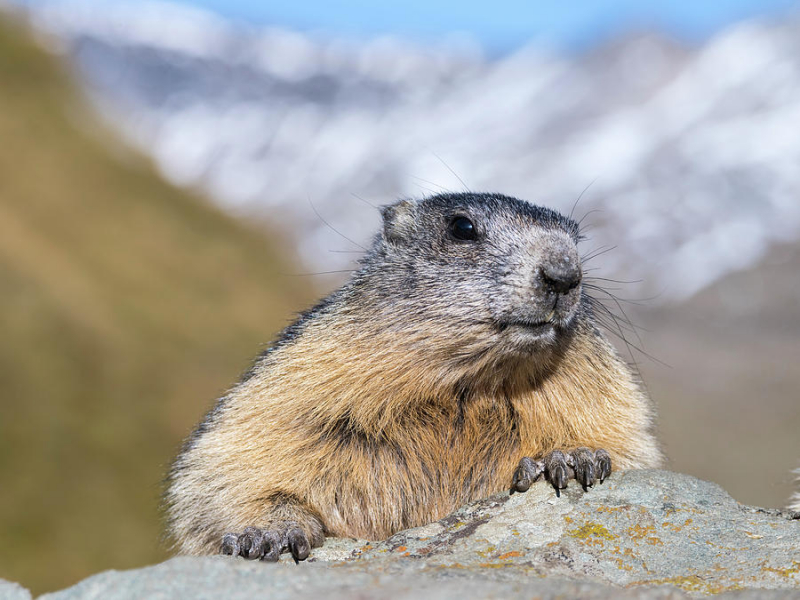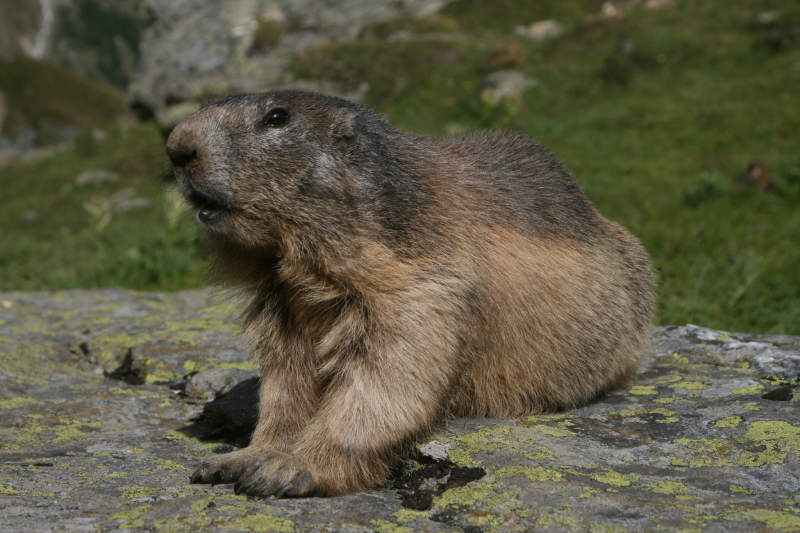Alpine Marmots

The Alpine Marmot (Marmota Marmota) is a sizable ground squirrel that belongs to the marmot family. It is found in high numbers in mountainous areas of central and southern Europe, at heights between 800 and 3,200 m (2,600–10,500 ft) in the Alps, Carpathians, Tatras, and Northern Apennines. In 1948 they were reintroduced with success in the Pyrenees, where the alpine marmot had disappeared at end of the Pleistocene epoch.
Alpine marmots hibernate in order to withstand the harsh winter weather variations and food shortages. Alpine marmots gather old stems in their burrows as the summer comes to an end to prepare for their upcoming hibernation, which can begin as early as October. They use a mixture of soil and their own waste to seal the hole. Alpine marmots will cluster up near one another as winter approaches and start to hibernate, slowing their breathing and heart rate to five beats per minute and 1-3 breaths per minute, respectively. Passive heat exchange between nestmates is facilitated by cuddling, and larger hibernating groups have higher survivorship rates. During hibernation, their stored fat supplies are used slowly, which usually allows them to survive the winter.











